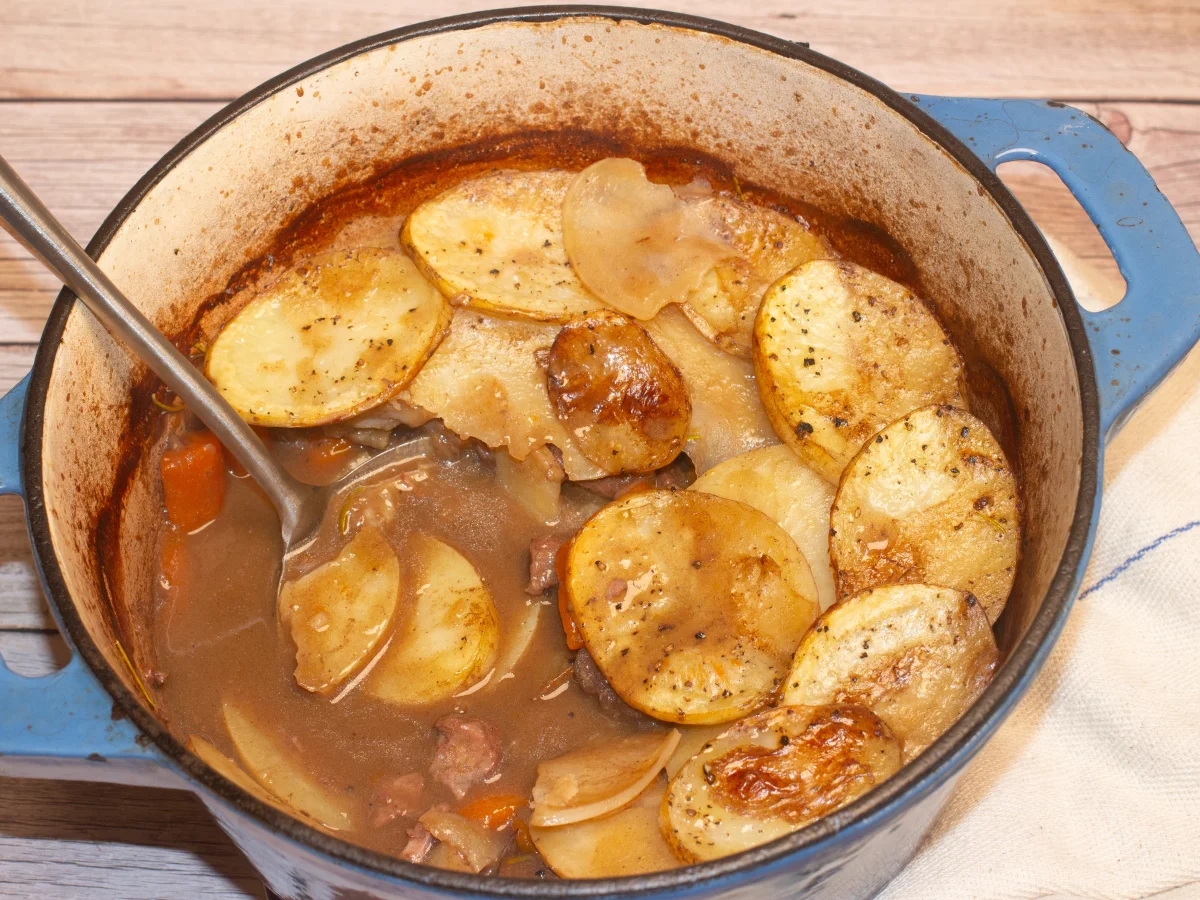
Traditional Cornish Pasty

The classic Cornish pasty made with beef skirt, swede, potatoes and onion all wrapped up in a golden brown shortcrust pastry.
Ingredients
For the Shortcrust
For the Filling
For the Glaze
Method
Add the flour to a bowl with 1 tsp of salt.
Dice the butter and lard, add to the flour, and rub the ingredients together with your fingertips, to create a breadcrumb like texture. Lift your hands up as you rub the fats between your fingers and drop back into the bowl to help distribute the butter and lard evenly.
Gradually add the cold water to the mixture and bring it together with your hands to make a soft, but not wet, dough. Depending on the flour you're using you might not need all the water, or you may need a little more.
On a floured surface, knead the dough for a 2 -3 minutes until it becomes elastic, you can also do this with the dough hook attachment of a mixer if you prefer, but be careful not to overwork the dough.
Cover and place in the fridge for 3 hours.
Chop the potatoes and swede (rutabaga) into small cubes (about 1cm), cut the beef in to small pieces and chop the onion. Add all ingredients to a bowl and mix together along with a good pinch of salt and pepper; you want the pepper to provide a bit of a kick, but not be too overpowering.
Divide the dough into 6 equal parts (roughly 150g each), place the first piece on a floured surface and roll into a circle about 20 cm in diameter. Using a 20cm serving plate, lid of a saucepan (or any approx. 20cm circle you can find in your kitchen to cut around), place it on the dough and cut around the edges to get a perfect circle. Place on a plate with a little flour on top, and repeat for the remaining dough.
Note: The floured top is just to stop the pasty cases sticking to each other when you place them on top of each other.
Heat your oven to 170C (340F / Gas Mark 3), take one of your pasty cases and add some of the filling to the centre of the case. With a pastry brush, brush the edges of the case with water, fold in half and press down around the edges to form the crust.
Now for the crimp Using your forefinger on one hand as a guide pinch a piece of the crust between the forefinger and thumb of your other hand and fold it over your guiding finger, press down with your forefinger. Now slide your guide finger slightly along the crust, swap your crimping forefinger with your thumb (so you're still holding the dough in place), then wrap your forefinger back over the back of dough to pinch the next piece and fold over your thumb. Repeat this for the entire length of the crust.
I know this sounds complicated, but it is quite a smooth, natural movement, as if you're walking your fingers along the crust, folding as you go. If you're unsure, try practicing the crimping movement on a tea towel first.
Place your finished pasty on a baking tray lined with baking / parchment paper and repeat for the remaining pasties.
In a small bowl, beat 1 egg with 1 tbsp of milk, then brush over the top of the pasty with a pastry brush, this mixture give a the pasty a golden brown sheen.
Put the pasties in the oven and cook for 1 hour, until they are beautifully golden brown.
You Might Also Like
Notes and Information
As a kid I used to spend my family holidays in Devon and Cornwall where my Grandad originally came from, because my Dad enjoyed seeing where his Dad grew up (it's also beautiful!). On the long drive back home, we would always pick up a few boxes of Cornish pasties from a local bakery, which we then froze for future dinners. There isn't much that can (or needs to be) changed in a traditional recipe like this, so my aim is to get it as close to those pasties I ate on my visits to Cornwall as a child.
Pasty Shortcrust
The shortcrust for the Cornish pasty is sturdier and more elastic than standard shortcrust, so strong bread flour is used as it contains more gluten.
Shortcrust generally uses half the amount of fat to flour (500g flour = 250 g fat). I'm using a mixture of lard and butter as that's the combination passed down to me by my Mum - who makes excellent shortcrust! But if you don't have lard, you can replace it with shortening (but it will be less flavourful and a little softer) or butter (but it will be a less sturdy and a bit more crumbly).
Make sure the butter and lard is cold when making shortcrust as it helps create the flaky texture and helps prevent the pastry from becoming sticky during kneading.
Unlike normal shortcrust pasty shortcrust pasty shortcrust is kneaded, to help develop a stronger dough.


Comments (0)